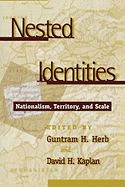 Chelvadurai Manogaran, 'Space-Related Identity in Sri Lanka‘ in Guntram Herb & David Kaplan editors, ‘Nested Identities: Nationalism, Territory, and Scale’, 1999, pages 199 – 216
Chelvadurai Manogaran, 'Space-Related Identity in Sri Lanka‘ in Guntram Herb & David Kaplan editors, ‘Nested Identities: Nationalism, Territory, and Scale’, 1999, pages 199 – 216 Ilankai Tamil Sangam
Association of Tamils of Sri Lanka in the USA
Published by Sangam.org
by Prof. Chelvadurai Manogaran, 1999
|
It is estimated that almost a quarter of the island’s population was moved from the Wet Zone to the Dry Zone between 1946 and 1971, under peasant colonization schemes. Unfortunately, most of the areas targeted for colonization were predominantly in the Tamil-dominated northern and eastern provinces of the Dry Zone. |
 Chelvadurai Manogaran, 'Space-Related Identity in Sri Lanka‘ in Guntram Herb & David Kaplan editors, ‘Nested Identities: Nationalism, Territory, and Scale’, 1999, pages 199 – 216
Chelvadurai Manogaran, 'Space-Related Identity in Sri Lanka‘ in Guntram Herb & David Kaplan editors, ‘Nested Identities: Nationalism, Territory, and Scale’, 1999, pages 199 – 216
“Ethnic minorities consider their traditional homelands as treasured possessions because these help to preserve their cultural and political identities in multiethnic states” (p.199)
“Sri Lankan Tamil nationalism did not become a political force until the second half of the twentieth century...” (p.205).
Sri Lankan Tamils “did not comprehend the extent to which the rising tide of Sinhalese nationalism would threaten the very survival of their ethnic identity...” (p.206).
“It is estimated that almost a quarter of the island’s population was moved from the Wet Zone to the Dry Zone between 1946 and 1971, under peasant colonization schemes. Unfortunately, most of the areas targeted for colonization were predominantly in the Tamil-dominated northern and eastern provinces of the Dry Zone. Although Sinhalese peasants moved in large numbers in the direction of Tamil areas, no Tamil colonists were settled in the major colonization projects established in the Sinhalese-dominated north central, central, and southern provinces of the Dry Zone” (p.208).
Twenty Books on Eelam Tamils for reference & research
© 1996-2024 Ilankai Tamil Sangam, USA, Inc.